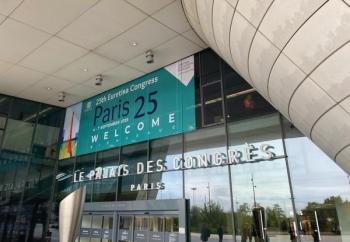
Tachyphylaxis in patients with wet AMD
What is it and how might we avoid it?
Anti-vascular endothelial growth factor (VEGF) drugs are widely accepted as first-line treatment for those with neovascular AMD. Anti-VEGF drugs suppress endothelial cell proliferation and vessel leakage, but as the drug is eliminated, disease activity can resume. This necessitates regular intravitreal injections, usually for the remainder of a patient's life. Initial clinical trials with ranibizumab showed impressive results with monthly dosing regimens, but when the dosing was reduced to quarterly or 'as needed' treatment, the visual results were less positive.3 Studies such as HORIZON demonstrate that even after three years of treatment, the need for additional injections continues.4
Chronic intravitreal injections lead to a small but cumulative risk of complications such as retinal detachment and endophthalmitis. They also raise the prospect of tachyphylaxis. Tachyphylaxis describes a progressive decrease in therapeutic response after repetitive administration of a pharmacologically active substance. It applies to range of systemic diseases, but there is growing awareness of this phenomenon in relation to the pharmacotherapy of wet AMD.
A major problem for the chronic administration of a pharmaceutical is the desensitization of the target tissue to the drug itself. For medications taken chronically, tachyphylaxis is a major concern that can limit long-term efficacy. Studies have shown that after the first treatment of intravitreal bevacizumab for AMD, the median time taken to develop tachyphylaxis was 100 weeks (range: 31-128 weeks), and the median number of intravitreal bevacizumab treatments to the development of tachyphylaxis was eight treatments, but in some cases it occurred in as few as five injections.7
One way to reduce the incidence of tachyphylaxis may be the concomitant use of an intravitreal steroid. Schaal et al observed that tachyphylaxis was diminished if triamcinolone was administered alongside intravitreal bevacizumab.5 However, it should be noted that intravitreal steroids may be associated with raised intraocular pressure and glaucoma and are probably not justified as a routine treatment to prevent tachyphylaxis, especially as significant tachyphylaxis probably occurs in a minority of patients. As noted by Schaal et al there may be many reasons why steroids are protective, but it is also consistent with the hypothesis that there may be neutralizing antibodies to bevacizumab,8 assuming steroids would reduce this immune response.
Another option to reduce the frequency of anti-VEGF injections and tachyphylaxis might be the use of radiation. Radiation preferentially damages proliferating cells, and can therefore selectively target the cells that potentiate vision loss in wet AMD – endothelium, fibroblasts and inflammatory cells. Two biotechnology companies are actively investigating this treatment option. The IRay system (Oraya Therapeutics, Germany) uses stereotactic external beams to deliver radiation to the macula. It is presently undergoing early Phase II studies. The second, epimacular brachytherapy, combines a three-port pars plana vitrectomy with a surgical device (VIDION Anti-NeoVascular Therapy System, NeoVista, Fremont, Calif.) that delivers a 24 Gray dose of beta radiation within a closed 20 gauge delivery system.
A Phase II study of epimacular brachytherapy by Avila et al showed promising results.9 Epimacular brachytherapy was given alongside an anti-VEGF injection as it is thought there is a synergy between radiation and anti-VEGF drugs. A second anti-VEGF injection was mandated at Month 2, but thereafter anti-VEGF rescue injections were given on an as needed basis, based on disease activity. Patients showed a mean vision gain of 8.9 ETDRS letters and three quarters of patients required no rescue injections over 12 months. Large randomized controlled trials of this new technology are already underway: the CABERNET trial targets treatment naïve patients, whereas the MERLOT trial targets those who have already commenced anti-VEGF therapy. If these show a similar reduction in the need for rescue injections, then they may reduce the incidence of tachyphylaxis.
The introduction of anti-VEGF therapy represents an important milestone in the treatment of wet AMD, but the need for regular intravitreal injections may lead to tachyphylaxis in a subset of patients. It is therefore hoped that new treatments will reduce the need for such regular injections, or that appropriate treatment combinations may diminish its effect. Perhaps alternating intravitreal drugs would produce a so-called 'drug holiday' that has been used to manage tachyphylaxis in other organs, but in the absence of robust studies its application in AMD is unknown.
At present there are relatively few studies into the cause of tachyphylaxis in AMD. Given the widespread reliance on anti-VEGF therapy it is clearly important that we do more to understand the pathophysiology of this condition, if we are to manage it effectively.
Newsletter
Get the essential updates shaping the future of pharma manufacturing and compliance—subscribe today to Pharmaceutical Technology and never miss a breakthrough.















































